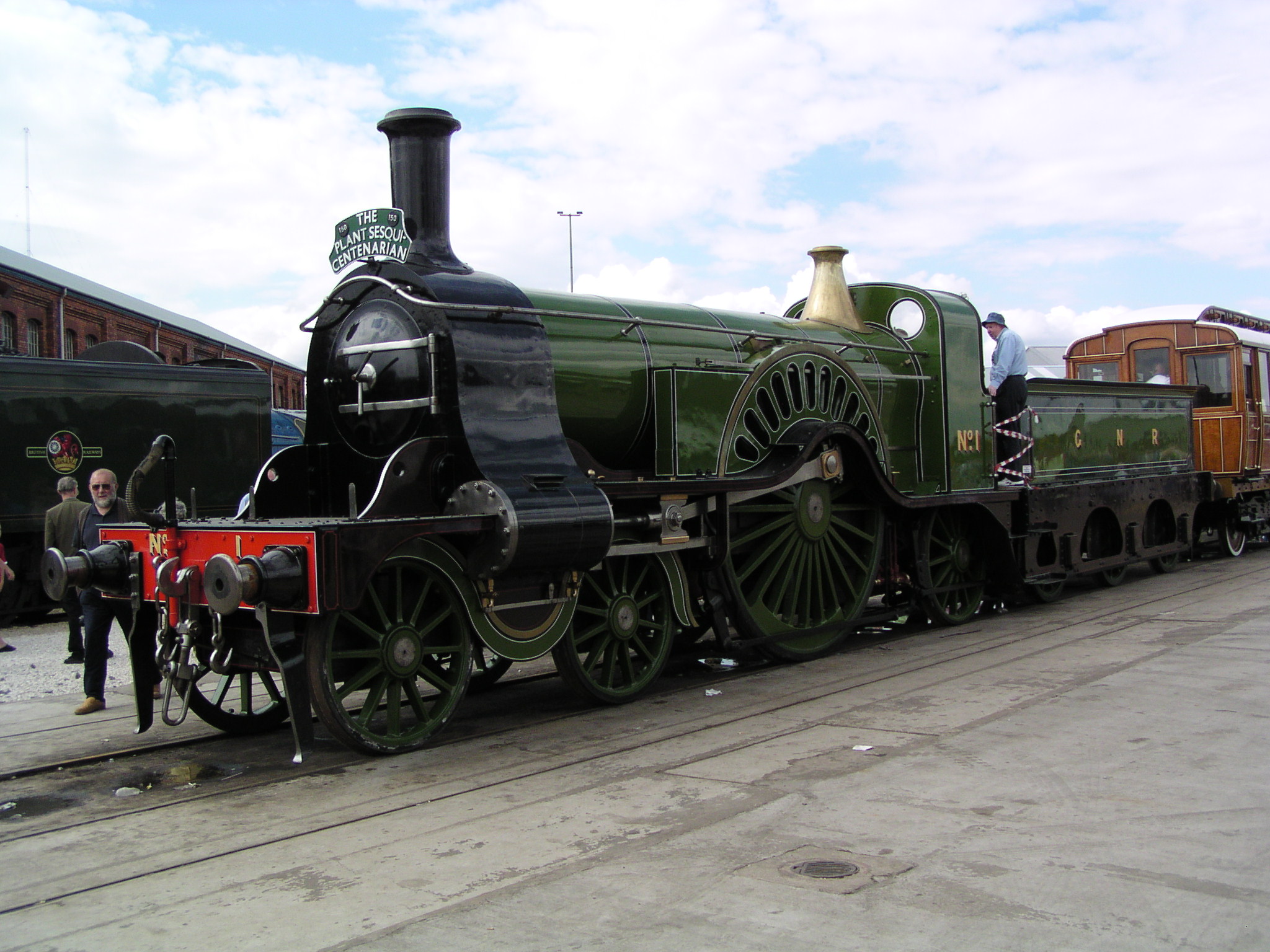|
GNR Class J4
The Great Northern Railway J4 Class was a class of 322 0-6-0 steam locomotives, introduced in 1882 designed by Patrick Stirling for goods traffic. Just over half of these were rebuilt by Nigel Gresley to a design by Henry Ivatt between 1912 and 1929. GNR Class J5/LNER Class J4 The GNR Class J5 was based on the GNR Class J7 0-6-0 tender engines designed by Patrick Stirling, thirty-five of which were built at Doncaster between 1867 and 1873, these had cylinders of stroke and domeless boilers of diameter. In 1873, Stirling decided to make a new design, later known as GNR Class J6, based on the J7s but with the cylinder stroke increased to . Between 1873 and 1879, 28 of these were built, after which the boiler was enlarged to diameter, and 132 more were built down to 1896. That year, Stirling introduced the GNR Class J5, with the boiler diameter increased to but still domeless, and ten were built. After Stirling's death, Ivatt amended this design to use a domed boiler of the s ... [...More Info...] [...Related Items...] OR: [Wikipedia] [Google] [Baidu] |
Patrick Stirling (railway Engineer)
Patrick Stirling (29 June 1820 – 11 November 1895) was a Scottish railway engineer, and Locomotive Superintendent of the Great Northern Railway of England. His father Robert Stirling was also an engineer. His brother James Stirling was also a locomotive engineer. His son Matthew Stirling was CME of the Hull and Barnsley Railway. Another son, Patrick Stirling played for Doncaster Rovers and was mayor of Doncaster. Career Patrick Stirling was Locomotive Superintendent of the Glasgow and South Western Railway from 1853 to 1866. He came in 1866 to the GNR, where he constructed several locomotive types. He was succeeded by Henry Ivatt. Stirling single Stirling's most famous construction was the 4-2-2 steam locomotive Stirling single called "eight-footer" because of the 8 ft 1 in diameter driving wheel On a steam locomotive, a driving wheel is a powered wheel which is driven by the locomotive's pistons (or turbine, in the case of a steam turbine locomotive). ... [...More Info...] [...Related Items...] OR: [Wikipedia] [Google] [Baidu] |
